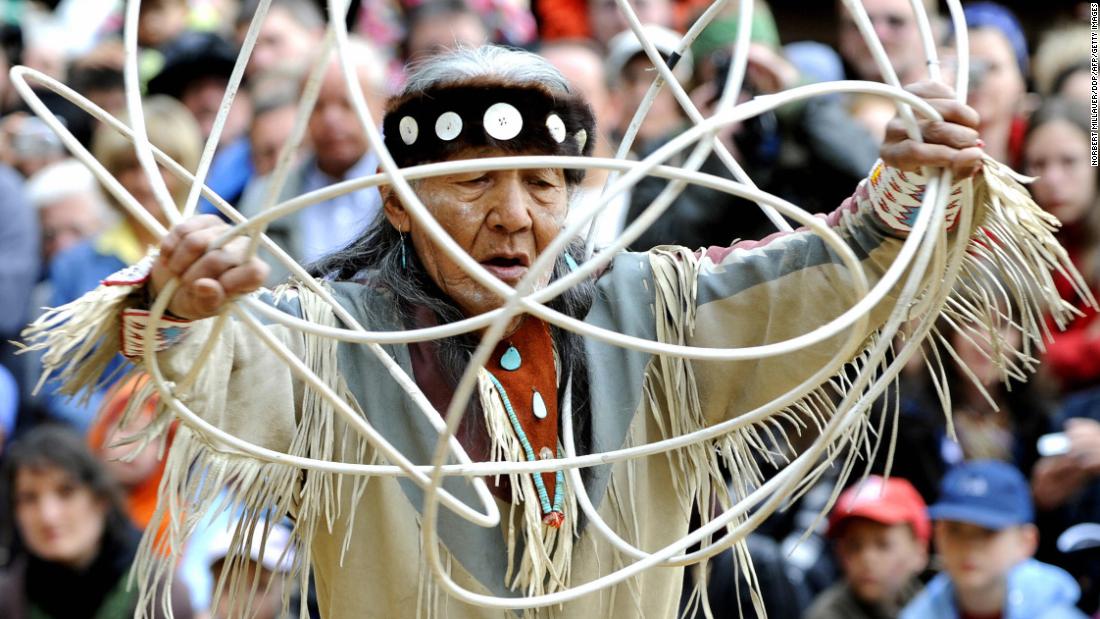
“Every time one of those elders leaves this world, it’s like a whole library, a very beautiful chapter of our history, of our ceremonies – all that knowledge is gone,” said Clayson Benally, a Navajo Nation member. “It’s not written, it’s not dictated, you won’t find it on the Internet.”
Self-isolating in their homes in Flagstaff, Arizona, Clayson and his sister Jeneda Benally worked to pass on the knowledge of their older father, Jones Benally, during the pandemic.
“I consider it the greatest responsibility I have ever had in my life to ensure that our knowledge keepers, to ensure that my parents, are on the other side of this pandemic,” said Jeneda.
Native Americans are particularly susceptible to the coronavirus because they suffer from disproportionate rates of asthma, heart disease, hypertension, and diabetes.
“Wherever we go, we are warned,” said Jones.
Keeping culture alive
A traditional medicine man and world-renowned hoop dancer, Jones is recognized by the state of Arizona as an Arizona Indian Living Treasure. His family does not know his exact age, but they estimate that he is in his 90s based on his recollection of events.
Jeneda and Clayson, along with their brother Klee, taught Dine, ‘the traditional Navajo language, as well as culture and science from their father. Now, with enough time at home, Jones is working with his children to pass on this knowledge to the grandchildren. One of their frequent activities is taking nature walks to learn more about medicinal plants.
“I’m trying to make it a multi-sensory experience,” said Jeneda, who has two daughters. ‘You know, we’re walking into the woods and I’m like, What do you see you can eat? What do you see here that medicine is? ‘
Due to the pandemic, Jeneda, a traditional physician, has had to stop seeing patients. It’s not the only profession she’s had a break from – she and Clayson haven’t performed as their band, Sihasin, in months.
But the award-winning punk-rock duo has taken advantage of their online platform to share cultural knowledge with members of the Navajo community and beyond. They host Facebook Live concerts, post informational videos on YouTube, and participate in online events for Native American causes.
“We want to use that as a platform to grab the attention of young people, to remind them that culture is cool,” Jeneda said.
However, Benally’s siblings are aware of what information they publish on the internet.
“There is a history of exploitation and people benefit from sacred and ceremonial knowledge,” said Clayson. How much can we share? You know, this is sacred knowledge. ‘
Working to protect the elderly
“It is terrible to see our people affected not only by this pandemic, but also by the lack of infrastructure, which even gives us the opportunity to make a living,” she said. “I mean, how can you wash your hands under running water for 20 seconds if you don’t have that?”
Additionally, without resources such as supermarkets near the reserve, residents rely on trips to border towns for supplies, putting them at risk of bringing the virus home.
To keep frail elderly at home, Clayson has volunteered with local organizations such as K’e Relief Project to bring supplies such as water, firewood and food to families in need on the reserve.
“There has been such a tremendous humanitarian effort,” said Clayson.
The Benallys believe the coronavirus has helped shed light on the injustices that Native Americans face on a daily basis. Much of the infrastructure problems that hinder Native Americans today go back to the way reservations were established by the Department of War, they said.
“When you think about what a prison looks like, the concept of a reservation is, here’s a wasteland where we can move the population and control them as a resource,” said Clayson.
While they continue to do what they can to protect their elders and community members, the Benallys remain positive.
“It’s hard not to get frustrated, but it’s so important to carry that seed of hope within us,” said Jeneda. “This heartbeat here is one of resilience.”